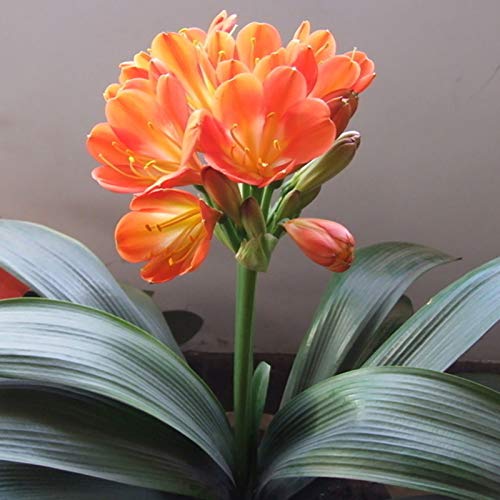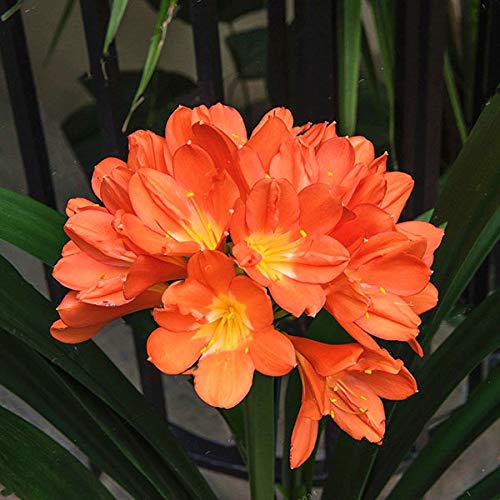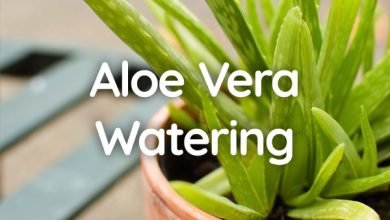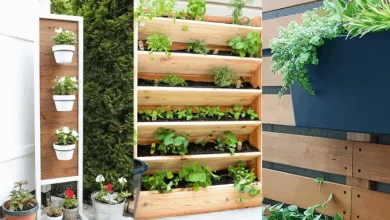Clivia Miniata: [Characteristics, Cultivation, Care and Disadvantages]
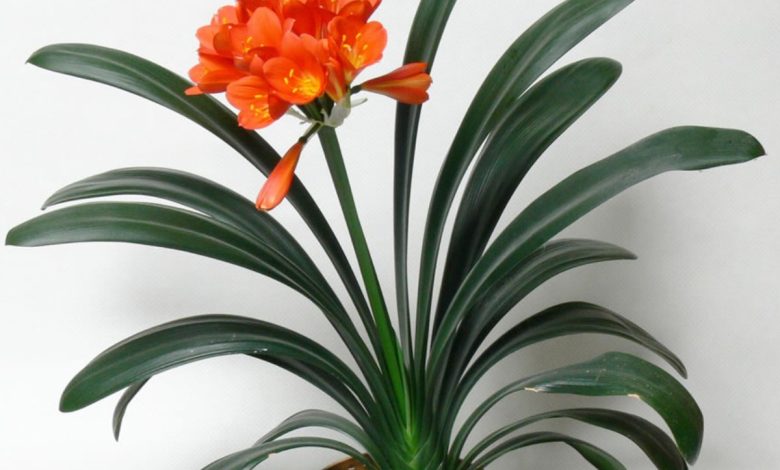
Important points when sowing a Clivia miniata:
- When? The clivia miniata plant should be sown in the spring or early fall.
- Where? The clivia miniata is highly appreciated for its beautiful flowering, which is why it can be planted in gardens, balconies andbright interiors.
- How do we water? Watering for clivia miniata should be abundant and moderate. It does not withstandconstant humidity or waterlogging well.
- How often do we water? During flowering and annual growth, spring -summer, the clivia miniata needs watering with a frequency of one watering every four days.
- What care does it require? The clivia miniata is an ornamental plant that requires some care for its cultivation and development. The soil or substrate must be fresh, fertile, deep and slightly acidic, avoiding compaction.
- What pests and diseases affect you? Clivia miniata is resistant to attack by pests and diseases, but is often affected by problems with irrigation, excess sunlight, frost and lack of nutrients.
What characteristics does the clivia miniata plant have?
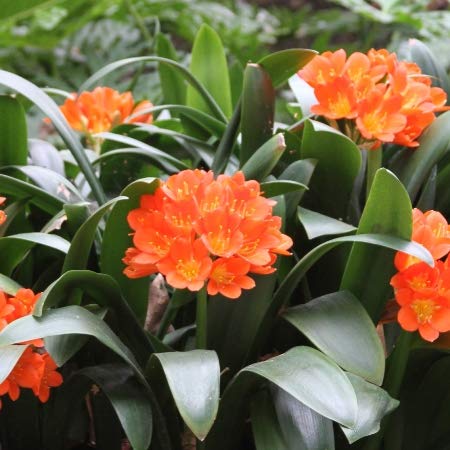 The clivia miniata is a herbaceous and perennial type plant native to South Africa, it can reach up to 50 cm and was classified in 1854.
The clivia miniata is a herbaceous and perennial type plant native to South Africa, it can reach up to 50 cm and was classified in 1854.
It presents a very large radical apparatus formed by very thick, fasciculated and fleshy rhizomatous roots that occupy all the space at their disposal.
The leaves of the plant are ribbons, leathery, long, flat, opaque or shiny and of an intense dark green color, 40 cm long, which make up a persistent foliage.
The flowers of clivia miniata are larger than those of other clivias and arise at the end of the succulent stem in groups or numbers from 6 to 15. Clivia miniata is valued ornamentally for the beauty of its open funnel-shaped flowers. up and a bright reddish-orange color.
It is a plant that enhances flowering instead of depressing it and blooms at the end of winter and until the beginning of summer. The fruit of clivia miniata is a fleshy, deep red berry containing 2 to 4 seeds, but it takes many months to ripen.
It produces many shoots during the year that can be reused to re-grow the plant and if left in the pot they put on a beautiful show.
When to sow clivia miniata?
The clivia miniata plant should be sown during spring or early fall.
Where to plant clivia miniata?
The clivia miniata is highly appreciated for its beautiful flowering, which is why it can be planted in gardens, balconies and bright interiors. For better development, clivia miniata should be placed on south-east, east and south-facing balconies that are favorable for it.
Experts and gardeners recommend sowing the clivia miniata in the garden, but in previously plowed and improved soil up to 25 cm deep.
How do we water clivia miniata?
Watering for clivia miniata should be abundant and moderate. It does not withstand constant humidity or waterlogging well. The best form of watering for clivia miniata, according to the recommendations of gardeners, is to spray and keep the environment of the plant moist.
How often do we water the clivia miniata?
During flowering and annual growth, spring – summer, clivia miniata needs watering with a frequency of one watering every four days. However, the watering should be reduced gradually until it is almost dry and only with a slightly moist substrate, from the beginning of autumn.
Once the floral scape is formed, at the end of winter, the irrigation of the clivia miniata should return to normal, that is, moderate irrigation once every four days.
The risks of the rain generally exceed the needs of the clivia miniata, so it is necessary to be very vigilant to protect it.
How to plant a clivia miniata step by step?
Clivia miniata can be sown from seed or from cuttings from a vigorous, disease-free adult plant. When planted from seeds, its flowering period will be after the second or third year. While when grown by cuttings, it can flower the same year.
The steps to follow are those:
- Acquire the seeds of the clivia miniata or take a cutting directly from a healthy and robust specimen that must have its roots pruned and must contain 5 or 6 leaves.
- To remove the cutting of the clivia miniata, sharp, clean and disinfected utensils must be used.
- Select a place in the garden previously prepared to receive the crop, or a terracotta pot 20 cm deep.
- Fill with fertile substrate or with coarse sand and peat in equal parts.
- Water moderately without flooding the plant.
- Locate the crop or plant in a bright spot in the garden.
- Change the pot during the spring or renew the surface layer of the substrate of the adult plant every three years.
What care does the clivia miniata need?
The clivia miniata is an ornamental plant that requires some care for its cultivation and development.
- The soil or substrate must be fresh, fertile, deep and slightly acidic, avoiding compaction.
- When planted directly in the garden, the soil can be corrected with some river surf, sand and peat in equal parts.
- It is a crop that does not withstand prolonged periods of moisture from its roots, nor flooding very well.
- Good drainage is very important for clivia miniata cultivation.
- It is a plant that does not support hot or very dry environments, but tolerates frost well when temperatures do not drop below 0º C.
- Clivia miniata adapts to various types of light, but it reproduces best in semi-shade and with some early morning sunlight.
- It is recommended to fertilize with compound fertilizers placed at the base of the plant and with bone meal, at the beginning of summer and autumn.
- The leaves of the clivia miniata can only be cleaned with a damp cloth, without applying any type of polish or oil.
- It does not require deep pruning, only the removal of dry leaves.
What pests and diseases affect clivia miniata?
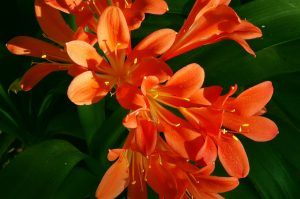 Clivia miniata is resistant to attack by pests and diseases, but is often affected by problems with irrigation, excess sunlight, frost and lack of nutrients.
Clivia miniata is resistant to attack by pests and diseases, but is often affected by problems with irrigation, excess sunlight, frost and lack of nutrients.
Symptoms that may be seen on clivia miniata include: brown foliage, dark, pale, or sparse leaves; sparse flowering or lush budding with small or limited flowers.
To care for and prevent problems that can harm clivia miniata, gardeners and experts recommend:
- Avoid abundant watering on the foliage of clivia miniata.
- Protect the crop from cold frost.
- Fertilize with compound fertilizer for flowering plants.
- Divide or lift the plant in the spring.
Bibliographic references
- Ornamental flora of the Alcazaba, Gibralfaro castle and Puerta Oscura gardens, Málaga, PS Sánchez, BD Garretas – Bulletin of the Malaga Academy…, 2012 – dialnet.unirioja.es
- Toxic plants that affect the digestive apparatus of canines and felines, PA Zeinsteger, AA Gurni – Veterinary Magazine, 2004 – revista.unne.edu.ar
- Toxic plants in the ornamental flora of Malaga, BD Garretas, RA Díez – Bulletin of the Malaga Academy of…, 2011 – dialnet.unirioja.es
- Notes for an ornamental flora of the Marina Baixa region, D Guillot – Sarrià: Magazine d’investigació i assaig de la Marina…, 2010 – raco.cat
- Chorological notes on neophytes of the Valencian flora, DG Ortiz – Flora Montiberica, 2003 – dialnet.unirioja.es

